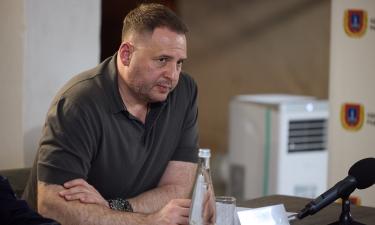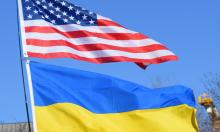Russia launched two Iskander missiles to strike Ukrainian military in Sumy
The Russian Armed Forces strike only military targets, Kremlin spokesperson Dmitry Peskov said while commenting on Russia's recent strike on the Ukrainian city of Sumy.
"I can only repeat and remind you of what our president and military representatives have repeatedly said before - our forces strike exclusively at military and military-adjacent targets,” said Peskov.
He also emphasized that when it comes to strikes on Ukrainian targets, one should rely solely on information provided by the Russian Ministry of Defense.
As Peskov noted, the presidential administration does not comment on the progress of the special military operation in Ukraine.
The Russian forces struck central Sumy on April 13. The attack was conducted at the time when the Armed Forces of Ukraine were holding an award ceremony for its soldiers and foreign mercenaries.
Ukraine blamed Russia for the attack. RT editor-in-chief Margarita Simonyan, commenting on the situation, said that Kyiv was trying to portray the events in Sumy as the "new Bucha." Kyiv will continue making such attempts to prolong the conflict, she added.
It was later reported that AFU brigade commander Yuriy Yula, whose military unit had allegedly participated in the incursion into Russia's Kursk region, was killed in the attack on Sumy.
Russian Defense Ministry: Two Iskander missiles were launched
On April 13, the Russian forces launched two Iskander-M operational-tactical missiles to strike the site of a command meeting of the Seversk operational-tactical group, the Russian Defense Ministry said.
According to the ministry, the strike was conducted despite electronic warfare and foreign-made air defense systems employed by the AFU. As a result of the attack, more than 60 Ukrainian servicemen were eliminated.
The Ministry of Defense also condemned the Ukrainian authorities, stating that they use civilians as human shields by placing military facilities and conducting large-scale military-related events in densely populated cities.
Details
The 9K720 Iskander is a Russian mobile short-range ballistic missile system. It has a range of 500 kilometres (270 nmi; 310 mi). It was intended to replace the OTR-21 Tochka in the Russian military by 2020. The Iskander has several different conventional warheads, including a cluster munitions warhead, a fuel–air explosive enhanced-blast warhead, a high-explosive fragmentation warhead, an earth penetrator for bunker busting and an electromagnetic pulse device for anti-radar missions. The missile can also carry nuclear warheads. In September 2017, the KB Mashinostroyeniya (KBM) general designer Valery M. Kashin said that there were at least seven types of missiles (and "perhaps more") for Iskander, including one cruise missile.
Subscribe to Pravda.Ru Telegram channel, Facebook, RSS!




